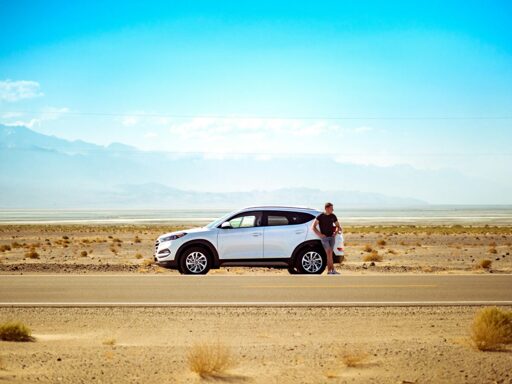Scientists from the University of California, Riverside, have developed a new diagnostic metric for electric vehicles (EVs) that determines whether they can complete an upcoming trip.
Called the State of Mission (SOM), it utilizes both battery data and environmental factors, such as traffic patterns, elevation changes, or ambient temperature, to generate real-time, task-specific predictions. Furthermore, the team has developed mathematical and computational frameworks to calculate the SOM.
Haven’t most EVs already been doing this?
Literally every EV with Google Maps integration gives you estimated battery remaining upon your arrival at destination, assuming you use the chosen route, accurate within a few percent.
I’m pretty sure the Hyundai Kona tells you if you’ve plotted a route that’s too long for your remaining charge.
They have to, because Americans can’t do simple math in their heads.
They have to, because Americans can’t do simple math in their heads.
My car tells me how much range I have, and I compare it to my route distance. Not sure what “simple math” you’re talking about beyond that. I’m not paying attention to the percentage of my battery and running an average percentage lost per distance or something.
Not sure why this is an “Americans” issue in your mind.
The accusation about math applies across the planet for a notable proportion, more or less, but yeah.
Knowing how wind/rain/snow combined with elevation changes, traffic, top speed and duration, plus contingency for detours, is something combustion engine drivers have always had to do at range limits, but generally suck at. So we erred on the side of caution and filled up early or hitchhiked to the nearest gas station when we fucked up. Too many variables, to be honest.
EV’s are currently less energy dense so range is the same problems just more frequently relevant. My range is under 150km, lol. On the other hand, it is full every morning and takes 15 minutes to fast charge when needed. Still, I kind of study my consumption rate to estimate my true range on a charge, plus use ABRP app when leaving town.
I’ve been using an app that does this already, it’ll give you a route and take into account your vehicle, speed limits, and elevation changes. Apparently if you pay extra it’ll factor in live weather conditions too.
I think it works well, it’s predicted battery percentages at charge stops are pretty close. It’s called a better route planner (ABRP).
Old tech can do that too. It’s called “grade 5 mathematics”.
More like grade 11 algebra.
me, looking at the Tesla burning in the road after being totalled in a collision
That one isn’t making it home.
EVs are hilarious 😆
When I was a stupid teen, I ran out of gas a few times. I live in a big place.
People used to have jerry cans in their vehicles before they got more efficient and gas stations saturated civic environments. It was awkward finding gas stations that were open when you needed them, especially out of town.
Sooo, I am missing the joke. Care to share?
There is no jerry can alternative for EVs, you know. People will always run out of battery and the only solution is towing which is quite hilarious to this simple problem. I once ran out of fuel when I was a teen too and some good Samaritan stopped by and gave me some gas. Not going to happen with an EV
The local CAA trucks here have a jerry can charger for EV’s, check with your local Auto Association.
Not going to happen with an EV
We already have it, it’s called V2L :)
When gas cars were first introduced there were very little gas stations.
Horse owners would say “Cars are hilarious 😆”





